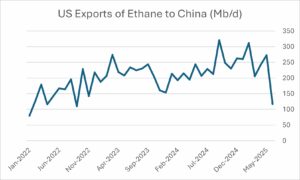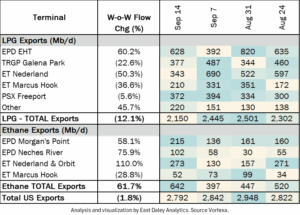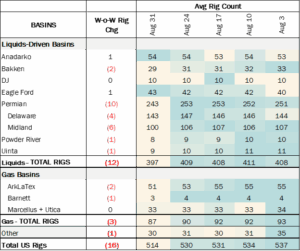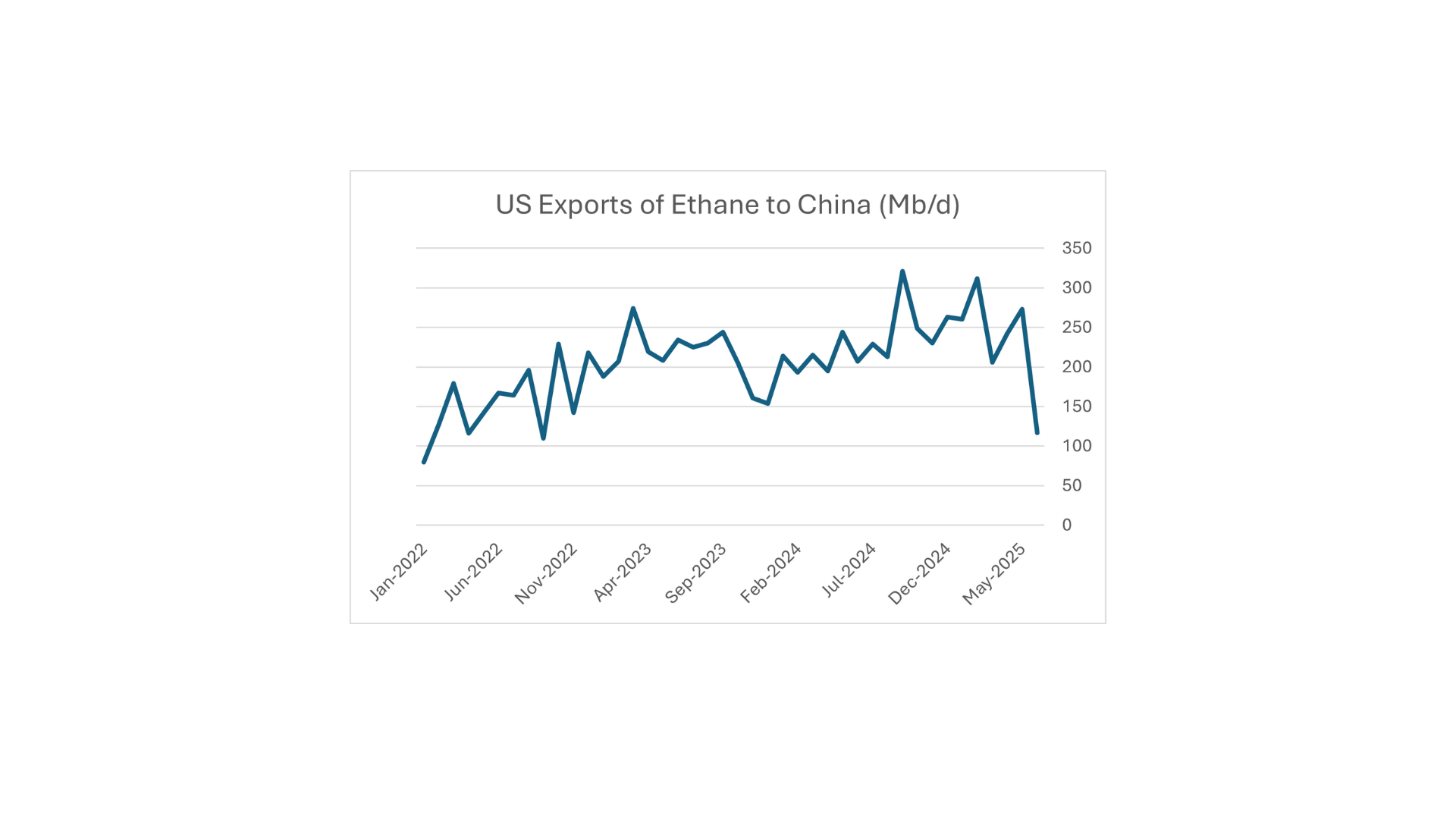Executive Summary:
Infrastructure: China in February and June commissioned more petrochemical plants able to use coal to produce polymers
Exports: Enterprise’s Neches River terminal, posted its strongest performance to date at 102 Mb/d, or roughly 85% of Phase 1 capacity. Neches River has now delivered four consecutive weeks of consistent volumes, highlighting a strong ramp-up in activity.
Rigs: The total US rig count decreased during the week of Aug 31 to 514. Liquids-driven basins decreased 12 rigs W-o-W from 409 to 397.
Flows: US natural gas volumes averaged 69.2 Bcf/d in pipeline samples for the week ending Sept. 14, down 1.3% W-o-W.
Infrastructure:
China in February and June commissioned more petrochemical plants able to use coal to produce polymers. These massive complexes sprawl across a cluster of interconnected plants. In areas with access to cheap coal, it could stand as a competitor to NGL-fed petrochemical plants.
Baofeng Energy in June started China’s latest plant in Ordos, Inner Mongolia to make petrochemicals from coal. The process, known as coal-to-olefins (CTO), gasifies coal and converts it into a synthetic gas, or syngas. The syngas is turned into methanol (a liquid), then from methanol to the olefins ethylene and propylene. The polymerization is identical to traditional routes using ethane, propane or naphtha to make petrochemicals. The olefins are then used as building blocks to make polyethylene and polypropylene.
The technology to turn coal into syngas is not new. German scientists in the 1920s developed what came to be known as the Fischer-Tropsch process to convert coal into hydrocarbon products. The US has one coal gasification plant, the Great Plains Synfuels plant, operating in North Dakota since the 1980s.

Coal gasification has mixed economic viability. It makes more sense in China, which is rich in coal resources but has more limited oil and gas reserves. The US and the Middle East, the two largest petrochemical regions, have abundant NGLs like ethane as an alternative. Its use in China is also linked to high crude oil prices, as naphtha is still the feedstock for most petrochemical capacity in the country.
The bad news for the industry is that China has driven nearly half of US ethane exports in recent years. India also has abundant coal reserves and is the world’s second-largest producer, making CTO a possibility there.
The recent trade spat with China has prompted petrochemical producers there to explore other avenues for securing feedstock. The US is the world’s only major ethane exporter, and the disruption of ethane shipments in June (shown in the chart) exposed the vulnerability of China’s petchem industry. Both Energy Transfer (ET) and Enterprise Products (EPD) revealed that customers in China are considering steps to diversify, such as replacing ethane with naphtha, in the aftermath. Several other CTO plants are currently under construction in China, and East Daley will continue to stay abreast of any new developments in this space.
Exports:
Total Exports: U.S. NGL exports fell 1.8% w-o-w, driven primarily by lower LPG loadings, though partially offset by stronger ethane volumes.
LPG Exports: Shipments declined 12.1% w-o-w, with weaker performance across nearly all major terminals. The notable exception was EPD’s Enterprise Hydrocarbon Terminal (EHT), which posted a 60.2% w-o-w increase.

Ethane Exports: Exports increased 61.7% w-o-w, supported by strong loadings across nearly all major facilities. The only notable decline came from ET’s Marcus Hook terminal, which fell 28.8% w-o-w.
A key driver was Enterprise’s Neches River terminal, which posted its strongest performance to date at 102 Mb/d, or roughly 85% of Phase 1 capacity. Neches River has now delivered four consecutive weeks of consistent volumes, highlighting a strong ramp-up in activity.
Rigs:
The total US rig count decreased during the week of Aug 31 to 514. Liquids-driven basins decreased 12 rigs W-o-W from 409 to 397.
- Permian:
-
- Midland (-6): Vital Energy INC, Exxon, Diamondback Energy, Chevron Corporation
-
- Delaware (-4): Coterra Energy INC, Continental Resources
- Bakken (-2): Continental Resources, Chord Energy
- Powder River (-1): EOG Resources, INC
- Uinta (-1): Uinta Wax Operating, LLC
- Anadarko (+1): M & M Exploration COEagle Ford (+1): Redhawk Operating, LLC

Flows:

US natural gas volumes averaged 69.2 Bcf/d in pipeline samples for the week ending Sept. 14, down 1.3% W-o-W.
Major gas basin samples declined 1.7% W-o-W to 42.5 Bcf/d. The Haynesville sample decreased 3.4% to 9.7 Bcf/d, and the Marcellus+Utica sample dropped 1.1% to 31.9 Bcf/d.
Samples in liquids-focused basins declined 0.5% W-o-W to 19.0 Bcf/d. The Eagle Ford sample rose 1.5% to 1.7 Bcf/d, while the DJ sample increased 3.0% after declining 4.0% the week before.
Calendar:





